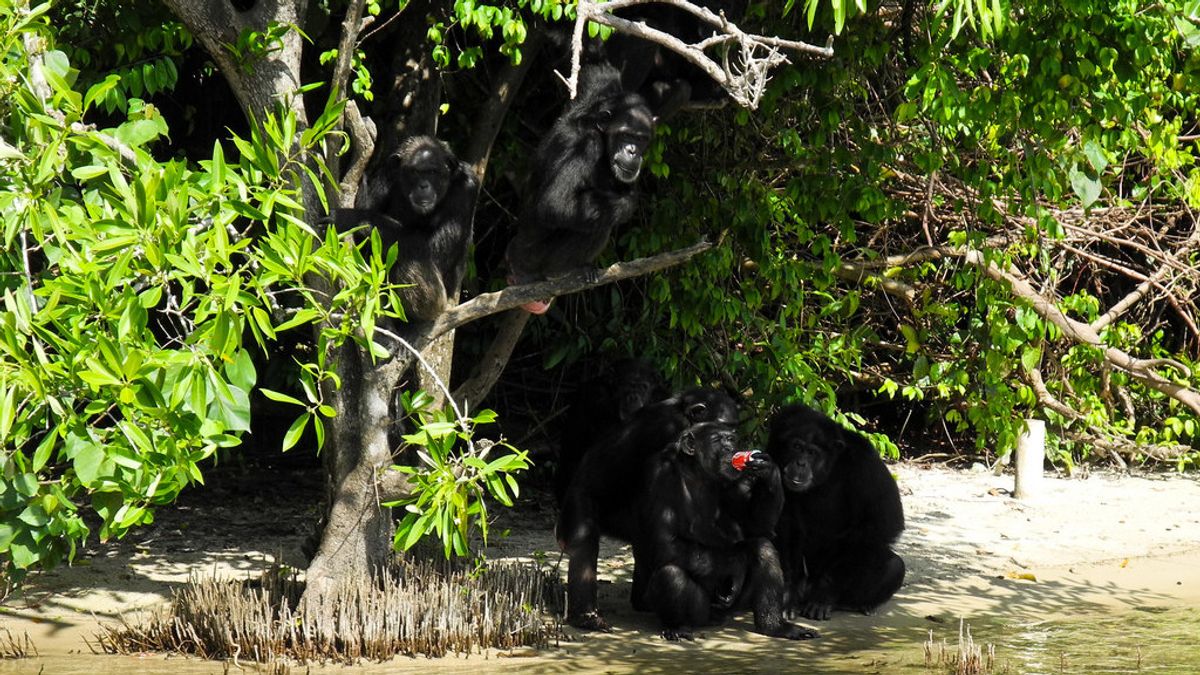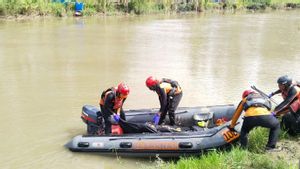JAKARTA - About 30 individuals carry out patrols in border areas, climbing rocky hills to carry out reconnaissance. Detecting sound approaching, they chose to step back and did not take the risk of being involved in the clashes.
That's not done by humans. Yes, the above scenario was carried out by chimpanzees at Gading Beach's southwest Tai National Park which is one of the largest protected rainforest areas in West Africa.
The researchers said they had documented the use of high-field tactical in war situations while observing daily two illegal western chimpanzee communities next door to Tai National Park for three years.
Information obtained during reconnaissance at the hilltop determines whether chimpanzees will invade enemy territory, the study found.
Simpanse seemed more likely to do so when the risk of confrontation was lower. The study, the researchers said, noted for the first time the use of this ancient military strategy by our closest relatives of our surviving species.
"This demonstrates advanced cognitive and cooperative skills to anticipate where and when to go, and to act on information gathered in a safe manner," said University of Cambridge biologist Syl total Lemoine, lead author of the study published in the journal 'PLOS Biology'. November 10.
Violence between groups often occurs in chimpanzees, said Lemoine. Fighting sometimes occurs in overlapping border areas.
"Save competes for space, which includes food sources. The vast area is beneficial for reducing competition in women's groups and reproductive rates to increase in the wider region," Lemoine said.
The two neighboring groups tracked in this study are equivalent in size, between 40 and 45 individuals, with about five to six adult men and 10 to 13 adult women, the rest are teenagers, teenagers, and babies. Men are always dominant against women, the researchers said.
"Simply highly territorial. They carry out border patrols regularly, where individuals roam on their outskirts in a highly coordinated and cohesive manner," explains Lemoine.
"They are involved in violent, dangerous and stressful encounters between groups. Meetings between groups can be in the form of remotely exchange of votes, visual contact or physical contact with fights, bites and chases. Murder is common, and victims can come from all walks of life. age class, "he explained.
Climbing the hill does not necessarily increase visual detection of members of the rival community, but offers better acoustic conditions for detecting the enemy through sound.
"The peak of the hill is covered in vegetation and does not provide a good observation point," said Lemoine.
While at the top of the border hills, chimpanzees usually refrain from eating or looking for food noisyly, but rest and listen.
اقرأ أيضا:
They are more likely to advance to dangerous territory after descending the hill if the rival chimpanzees are further away.
The attack occurred about 40 percent when the opponent was about three tenths of a mile (500 meters) away, 50 percent when the opponent was about six tenths of a mile (1 km) away and 60 percent when the opponent was about 1.9 miles (3 km) away.
Close-ranked stochise and bonobo are the species that are genetically closest to humans, and share about 98.8 percent.
The English, Chinese, Japanese, Arabic, and French versions are automatically generated by the AI. So there may still be inaccuracies in translating, please always see Indonesian as our main language. (system supported by DigitalSiber.id)


















